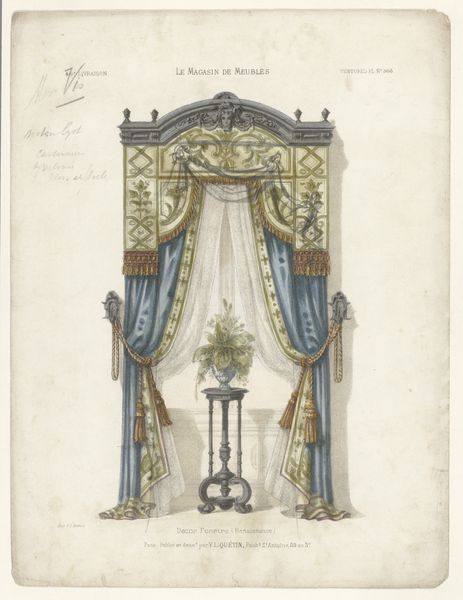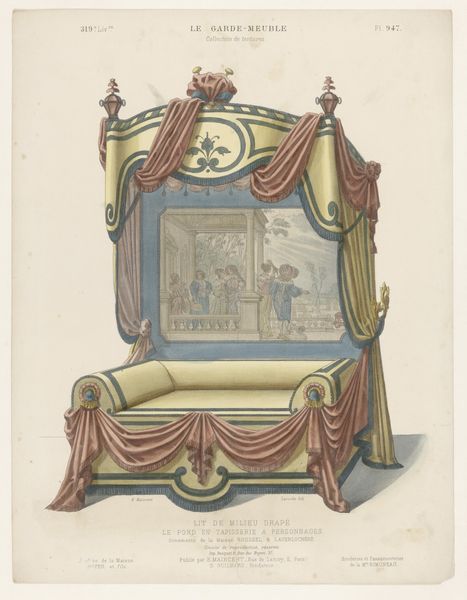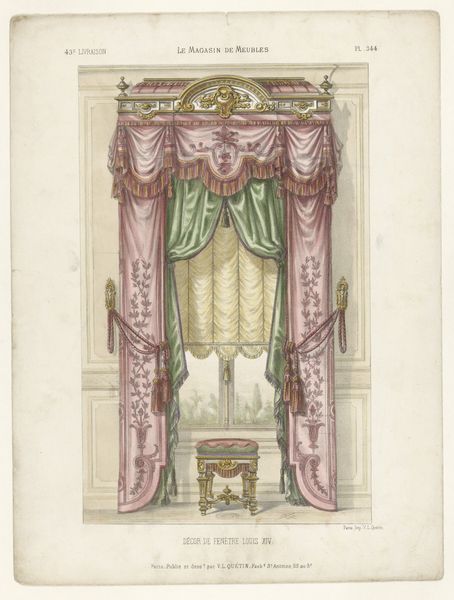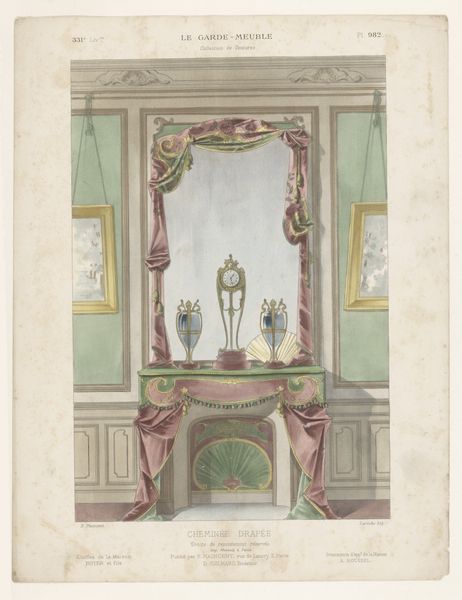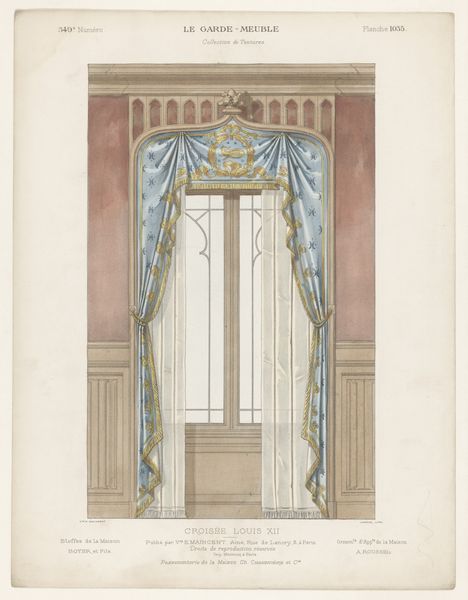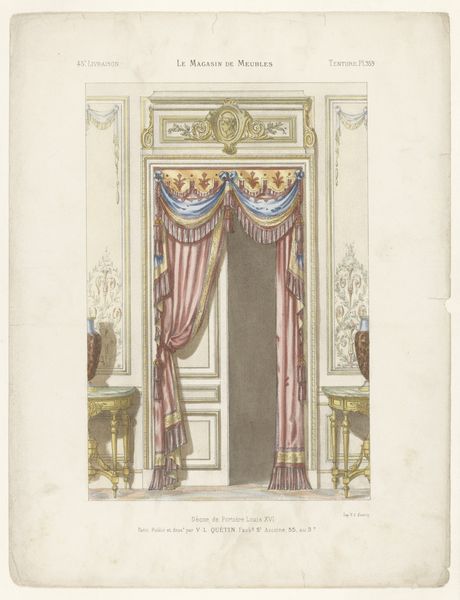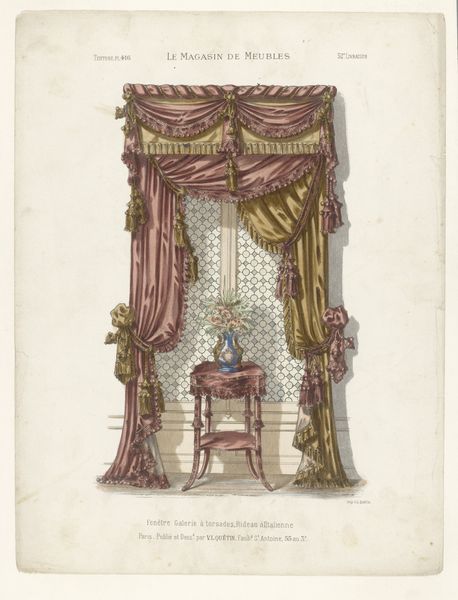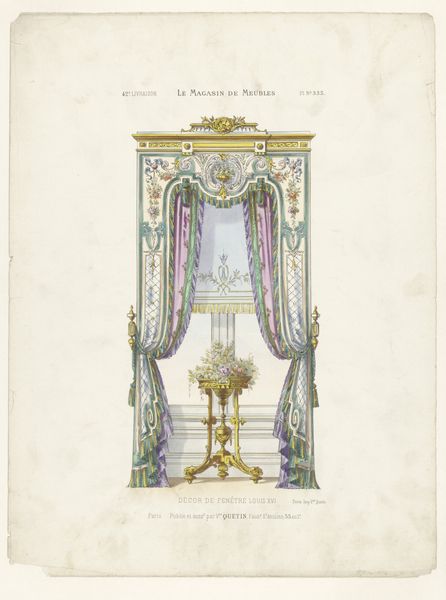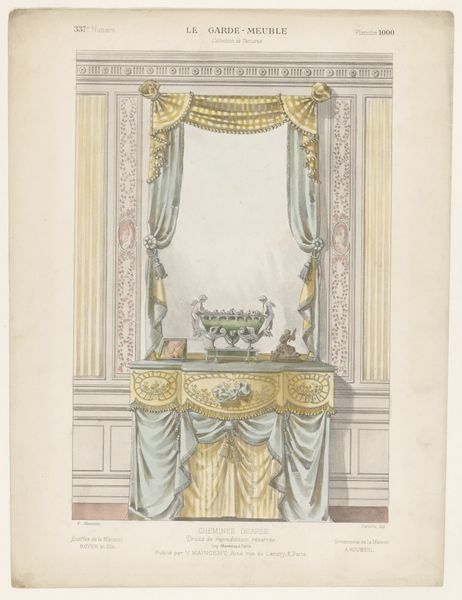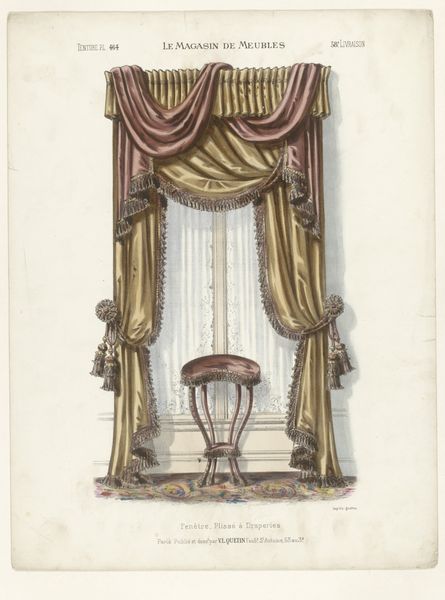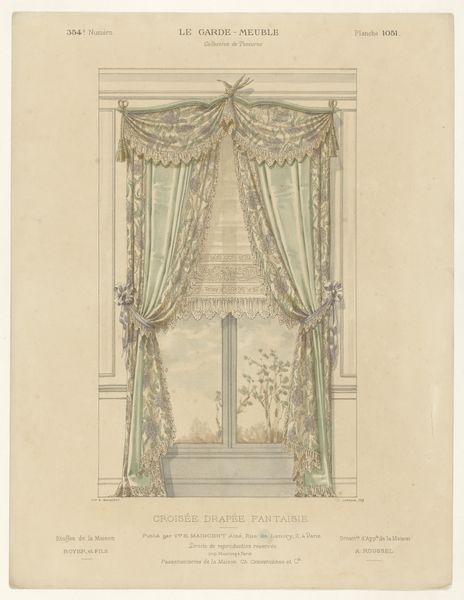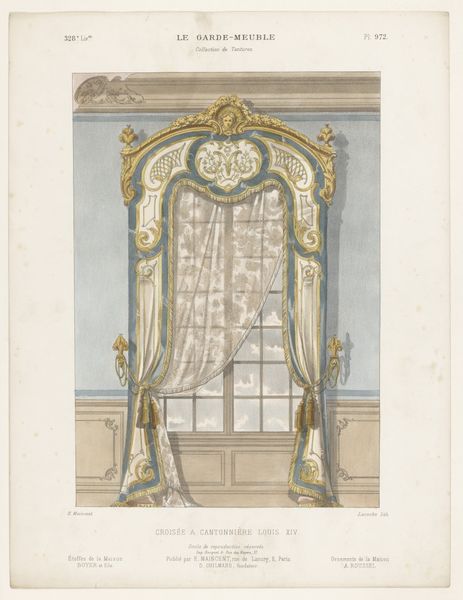
Dimensions: height 358 mm, width 273 mm
Copyright: Rijks Museum: Open Domain
Curator: Here we have "Venster met gordijnen", which translates to "Window with Curtains." Created after 1878 by an anonymous artist, this work combines lithograph and watercolor in a harmonious decorative study. The paper itself has aged to a creamy tone, hasn’t it? Editor: Yes, it lends a certain warmth, although my initial impression is somewhat…suffocating. The heavy drapery and ornate design feel more like a stage set than a livable space. There's a rigid formalism to it, as if beauty must be heavily policed. Curator: Ah, but look closer. Note the meticulously rendered tassels and the friezes atop the curtains. Those ornamental details speak volumes about the era's aspirations towards grandeur. Don't they also call to mind a sense of spectacle? Editor: Perhaps. But spectacle for whom? To me, this drawing signifies the constructed nature of bourgeois domesticity, particularly in the late 19th century. It feels restrictive and artificial, dictating how one should inhabit even the most private spaces. Curator: I understand. However, from an iconographic point of view, the symmetry and precise detailing might also be representative of an effort to create order and elegance amidst a rapidly industrializing world. Perhaps the window is acting as a symbolic border against chaos. Editor: That's a generous interpretation, yet it still underscores the inherent class divisions it reflects. A "window" of opportunity perhaps available only to a few, literally framed by layers of opulent fabric. Who is this supposed to appeal to and represent? Curator: These elements, these repeated friezes with stylized foliage, could imply enduring ideals, echoes of classicism intended to instill feelings of comfort. Though certainly they denote privilege and class distinction too. Editor: Yes, it does become about what's kept out as much as what comes in, literally as much as figuratively. That heavily dressed window functions as a boundary against something-- poverty, dissent, change, who knows? Curator: A point well taken. It gives a rich view into the period's complex relationship with beauty and status. Editor: Exactly, understanding the underlying social dynamics enhances our ability to read these kinds of decorative visual messages with greater understanding.
Comments
No comments
Be the first to comment and join the conversation on the ultimate creative platform.
